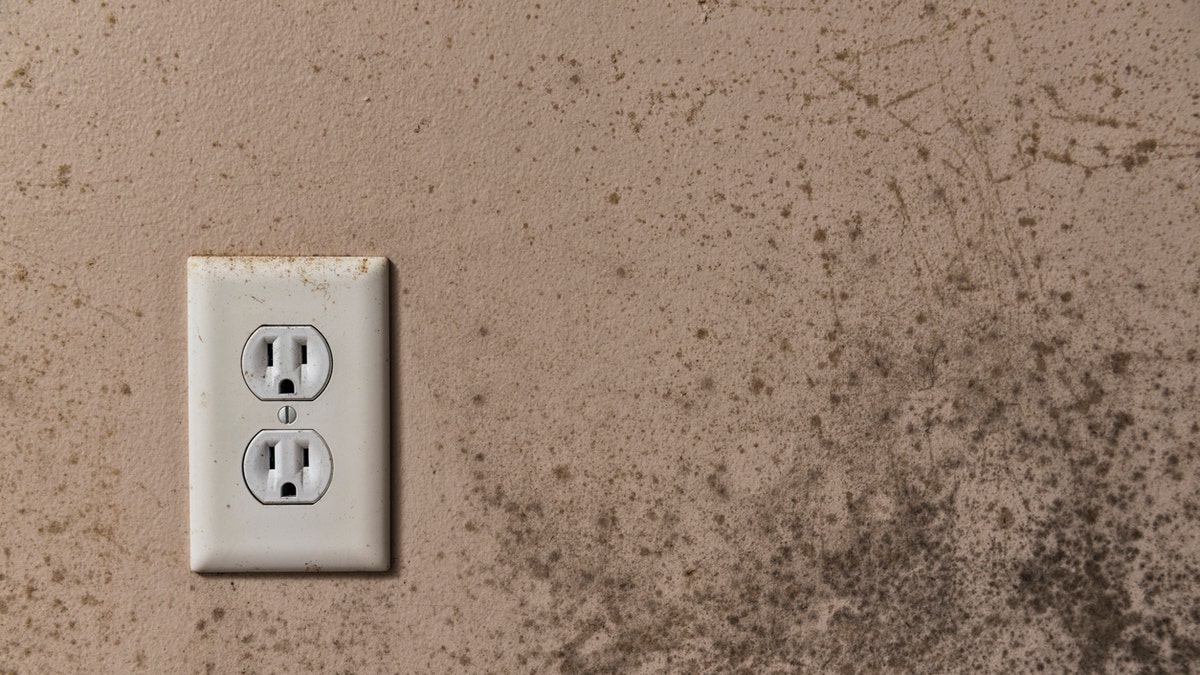
Toxic mold syndrome doesn’t actually refer to the mold itself, and not every mold will produce symptoms of toxicity. (iStock)
At one time or another in your life, you have probably been around or seen mold. Most people associate mold with the bathroom or other blatantly damp areas, but did you know that mold can grow just about anywhere?
Under the right humid conditions, many people will even have mold growing in the carpet. Without knowing why, you may find yourself with mysterious health problems that some identify as toxic mold syndrome. You never know——is toxic mold secretly affecting your family?
Toxic mold syndrome doesn’t actually refer to the mold itself, and not every mold will produce symptoms of toxicity. The molds that are toxic show that characteristic because they produce toxins known as mycotoxins.
MAN DEVELOPS FUNGAL INFECTION AFTER USING WOODWORKING BLADE TO POP PIMPLE
These toxins are largely ingested through contaminated food, but they can also be inhaled or absorbed by the skin. According to one 2011 review, researchers have identified chronic exposure to mycotoxins as a cause of cancer.
One type of mycotoxin called aflatoxins have also been associated with hepatitis B, leading to jaundice and exacerbating other health problems.
If left untreated for long periods, toxic mold syndrome can cause death through various diseases. Certainly, inhaling mold spores or ingesting them through food will have negative effects on your health.
Mold Allergy Vs. Toxic Mold Syndrome
How often toxic mold syndrome occurs in humans is hard to pinpoint. People don’t always associate symptoms with mold in their house, and many don’t know that they have a problem with mold in the first place.
Though the condition is debated in the medical world, patients often report mysterious symptoms that go away when mold is removed.
These symptoms include:
- Memory problems
- Difficulty concentrating
- Morning stiffness/joint pain
- Metallic taste
- Chronic sinus infections or cough
- Shortness of breath
- Recurrent headaches
- Balance issues (vertigo)
In many cases, people who suspect that they have toxic mold syndrome may actually have a simple mold allergy. With a mold allergy, a person’s immune system overreacts to mold spores as they are breathed in or ingested.
5 WAYS YOUR DAMAGING YOUR HEARING
Symptoms may come and go with the seasons or weather. An allergic person may have upper respiratory symptoms when they’re in areas with a higher mold concentration.
Unlike toxic mold syndrome, however, mold allergies will mainly produce upper respiratory symptoms like
- A cough or postnasal drip
- Itchy nose, throat or eyes
- Watery eyes
- Sneezing
- Runny/stuffy nose
- Dry skin
Sometimes, mold allergies can also trigger asthma, leading to wheezing, shortness of breath and chest tightness. If you have asthma, you may want to be tested for a mold allergy and stay alert to mold growth as a source of your symptoms. Whether you experience symptoms related to toxic mold syndrome or mold allergies, removing the mold entirely will ease the symptoms.
Do You Have Mold?
Many molds are not visible to the eye, but you can often spot a mold problem anyway. If you walk into your home and smell a lingering, musty odor, you could have mold.
Take note of any lingering respiratory symptoms, especially if they go away when you’re not at home. In addition, stay wary of potential problems in moisture-prone areas of the house or if you live in a humid climate.
You can also look for visual signs like surface mold in the bathroom or a discolored spot on the ceiling or walls. Did you have a leak recently that didn’t get dried out right away? You should always clean up leaks in your home within 24 to 48 hours. If you did not, you might have mold surrounding that area.
CAN YOUR TONGUE TELL IF YOU'RE SICK?
If you suspect a mold problem but can’t find the source, you will want to hire a professional. Mold simply cannot live with you in your house.
How to Avoid Mold in Your Home
Preventing mold in your home is a good way to fend off serious health problems. According to the Environmental Protection Agency, the key to that prevention is controlling moisture. Where you find mold, there is a water problem——and you’ll need to address both to put an end to the issue.
Let’s look at a few tips by the EPA for avoiding mold:
- Check problem areas repeatedly to ensure that mold has not resurfaced.
- Address water leaks/moisture problems immediately.
- Clean and repair roof gutters on a regular basis.
- Keep indoor humidity below 50 percent.
- Vent heat-producing appliances to the outdoors (stoves, dryers, kerosene heaters).
- Run your air conditioner or use a de-humidifier to keep humidity low.
- Insulate water pipes.
- Run exhausts during showering, cooking, handwashing dishes, or using the dishwasher. You can also open a window to air out the area.
Mold can have a big effect on your health, causing annoying respiratory symptoms or possibly contributing to other serious diseases. You should know that not all mold will cause problems and reactions to it may vary from person to person.
If you do have mold combined with mysterious problems like chronic allergy symptoms or even difficulty with memory or concentration, you may want to look into toxic mold syndrome. The health of you and your family are worth the investigation.
This article first appeared on AskDrManny.com.
